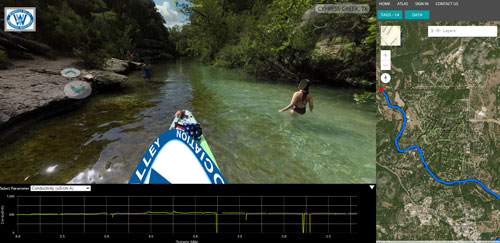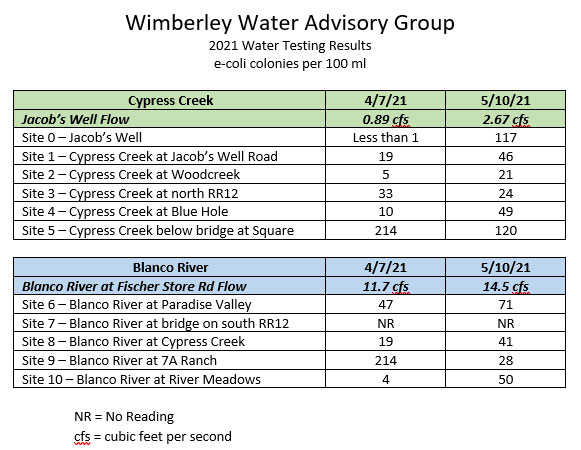
The Wimberley Water Advisory Group, a group of volunteers, has monitored both Cypress Creek and the Blanco River near Wimberley for E. Coli bacteria for decades. Long-time supporters of this data gathering effort, the WVWA is coordinating with Pete Anderson and the volunteers to expand the availability of this monthly data collected during the swim season.
The monthly, swim-season bacteria sampling began in 1984 with support from the Wimberley Chamber of Commerce, The Wimberley Community Civic Club, and The Wimberley Lions Club. Results are on file at the Chamber office and are published in the Wimberley View. Samples are analyzed at the Edwards Aquifer Research and Data Center Lab at Texas State University.
If e-coli counts are high (over 394 colonies per 100 ml of water sample) in the river or creek, there is a greater chance that pathogenic organisms are present.
Understanding E. Coli Bacteria Results
The Cypress Creek Project explains E. Coli bacteria:
The Environmental Protection Agency (EPA) has determined E. coli to be the best indicator of the degree of pathogens in a water body, which are far too numerous to be tested for directly, considering the amount of water bodies tested. A pathogen is a biological agent that causes disease.
A geometric mean is a type of average that incorporates the high variability found in parameters such as E. coli which can vary from zero to tens of thousands of CFU/100 mL. According to Texas Surface Water Quality Standards (Title 30, Chapter 307 of the Texas Administrative Code), the standard for contact recreational use in fresh water is geometric mean 126 colonies per 100 mL. A water body is considered impaired if the geometric mean is higher than this standard. The single sample max standard is 394 colonies per 100 mL.
WHAT IS E.COLI BACTERIA?
Escherichia coli, or E. coli, bacteria originate in the digestive tract of endothermic organisms.It is a type of fecal coliform bacteria that comes from human and animal waste. Since disease-causing bacteria, viruses and protozoans may be present in water that has elevated levels of E. coli, it serves as an indicator of bacterial pollution which is often present when contamination exists from untreated sewage, manure, wildlife or pet waste and therefore serves to identify times when it is unsafe for contact recreation.
Fecal coliform bacteria like E. coli indicate contamination due to untreated sewage, manure, or pet waste in contributing areas. High E. coli values during high and median flows may be associated with elevated sediment and nitrogen levels. BMPs that help to retain sediment and organic matter in upland areas will help to reduce bacteria entering the creek during these times. High E. coli levels at ambient condition and very low flows, however, tend to indicate a problem with malfunctioning septic systems near the creek or animal waste (pets, birds, bats and other wildlife) deposited directly into the stream.
Virtual Tour of Cypress Creek
 For a virtual tour of Cypress Creek, try the FishViews interactive map and viewer.
For a virtual tour of Cypress Creek, try the FishViews interactive map and viewer.
